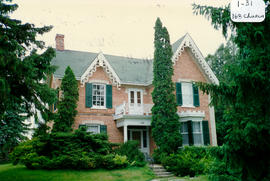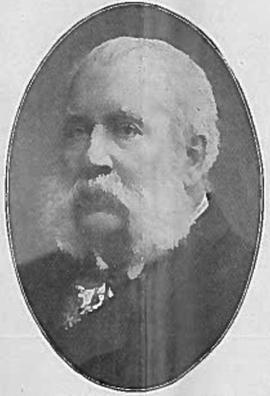Full obituary for Mrs. Fred (Catherine Eunice Scanlon) Wood:
"With the passing away at Newmarket Hospital on Friday, February 10, of Catherine Eunice Moore Scanlon, beloved wife of Fred Wood, West Gwillimbury lost one of its most well-known citizens. Mrs. Wood was born and lived all her life on the farm owned by her father, the late Thos. Scanlon, Lot 2, Concession 10, whose father, Mark Scanlon, settled at Scanlon's Creek about the year 1824. Her mother was the late Maria Sloane, whose parents settled on the farm of James Sloane about the same time. The late Mrs. Wood attended school at Mount Pleasant and later attended the High School situated at the northern entrance to the Pine Grove, Bradford. She was an Anglican and during her whole life attended St. Paul's Anglican Church, the church attended by her parents. Having lived her whole life on the same farm, and having a keen mind with vivid recollections of the early settlers, she knew intimately the history of West Gwillimbury and Bradford. Mrs. Wood is survived by her husband; one brother, Allan Scanlon, who wife was a former Bradford girl, Myra Baker; their six sons and one daughter, who attended the funeral. Predeceasing her were Annie (Mrs. Donald McKay); George; Birdie (Mrs. Thos. Wood), and Mark. The funeral was from the family residence to Mount Pleasant Cemetery, part of which was given to the Methodist Church by her grandfather, Mark Scanlon. The pallbearers were six nephews, Lewis Scanlon, Sudbury; Fred Scanlon, Copper Cliff; Douglas Scanlon, Callander; Bert Scanlon, North Bay; Walter Wood, Painesville, Ohio, and gerald Wood, Wyandotte, Mich."








